标签 NASA 下的文章
从国际空间站穹顶俯瞰南太平洋 View from the cupola of the International Space Station above the South Pacific Ocean (© NASA)
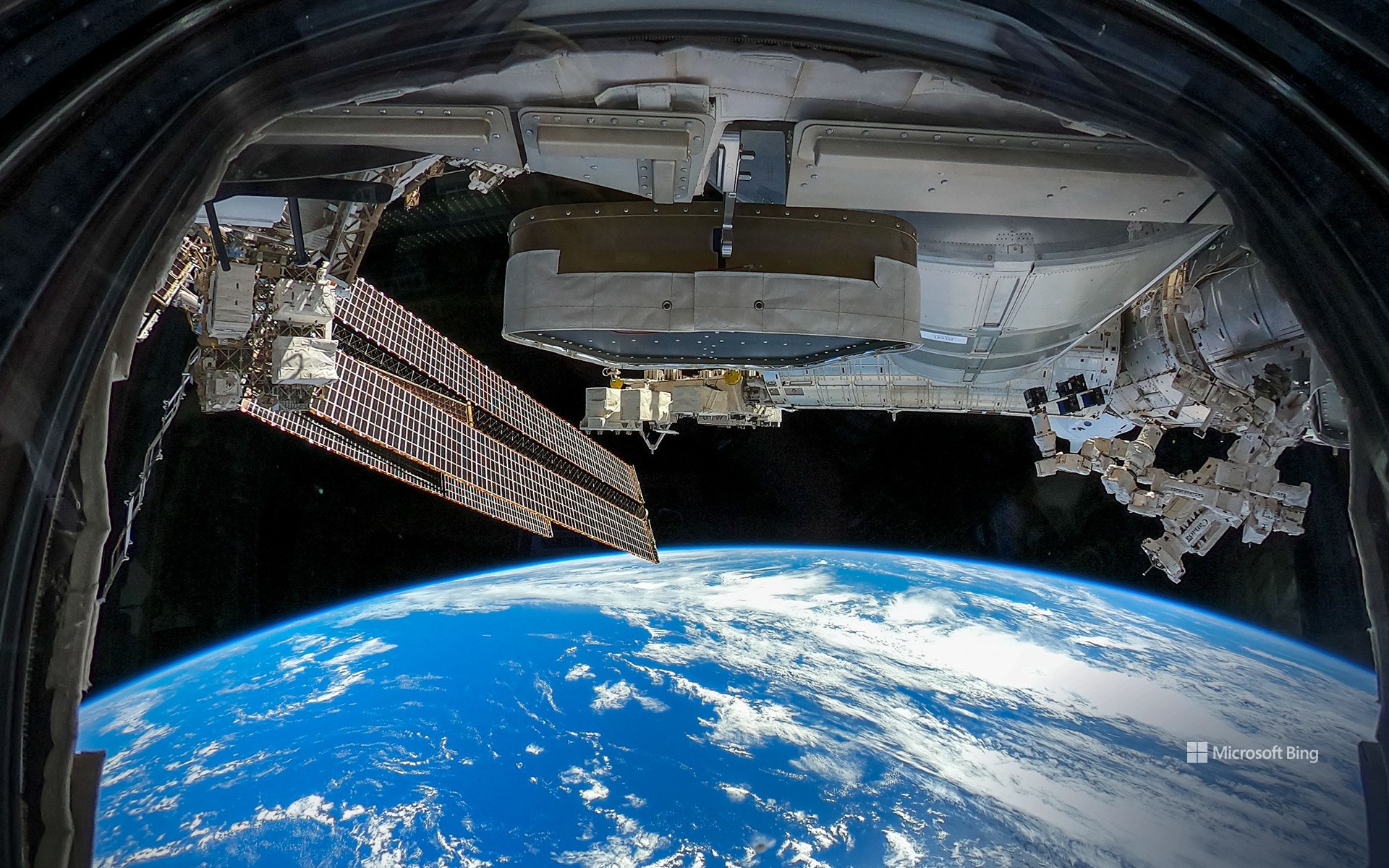
从国际空间站穹顶俯瞰南太平洋 View from the cupola of the International Space Station above the South Pacific Ocean (© NASA)
改变世界的108分钟 108 minutes that changed the world
载人空间飞行国际日
在人类历史上不久之前,我们迈出了超越地球的第一步。几千年来,人类仰望星空,想象着星辰大海的奥秘。然后,在1961年4月12日,一个人离开了地球,永远改变了历史。那天早上,苏联飞行员尤里·加加林登上了一艘名为“东方1号”的小型球形宇宙飞船。倒计时开始,发动机点火。随着火箭呼啸着冲向天空,他喊道:“出发了!”就这样,地球迎来了首位太空旅行者。
加加林在太空中绕地球飞行了 108 分钟,从人类前所未见的视角俯瞰着世界。当他安全返回地球时,一切都已不同。人类正式进入了太空时代。他的飞行点燃了登月竞赛,也让人们开始憧憬未来在火星生活的可能性。几十年后,为了纪念这一成就,联合国将 4 月 12 日设立为载人空间飞行国际日。今日图片展示的是国际空间站穹顶舱的视角,俯瞰广阔的南太平洋。这提醒着我们,在浩瀚的宇宙中地球是多么渺小,而人类航天探索已经走出了多远的距离。
International Day of Human Space Flight
Not so long ago, humanity took its first step beyond Earth. For thousands of years, we gazed at the stars, dreaming of what lay beyond. Then, on April 12, 1961, one man left the planet and changed history forever. That morning, Soviet pilot Yuri Gagarin climbed into a small, spherical spacecraft named Vostok 1. The countdown began. The engines ignited. As the rocket roared toward the sky, he called out, 'Poyekhali!'—'Let's go!' And just like that, Earth had its first space traveler.
For 108 minutes, Gagarin orbited the planet, watching the world from a view no human had ever seen before. When he landed safely back on Earth, everything had changed. Humanity had entered the Space Age. His flight sparked the race to the moon, the dream of living on Mars, and much more. Decades later, in honor of his achievement, the United Nations declared April 12 as the International Day of Human Space Flight. Pictured here is the view from the cupola of the International Space Station, showing the vast South Pacific Ocean. It is a reminder of how small Earth is in the grand cosmos—and how far human spaceflight has taken us.
木星的冰卫星木卫二 Jupiter's icy moon Europa (© NASA/JPL-Caltech/SETI Institute)
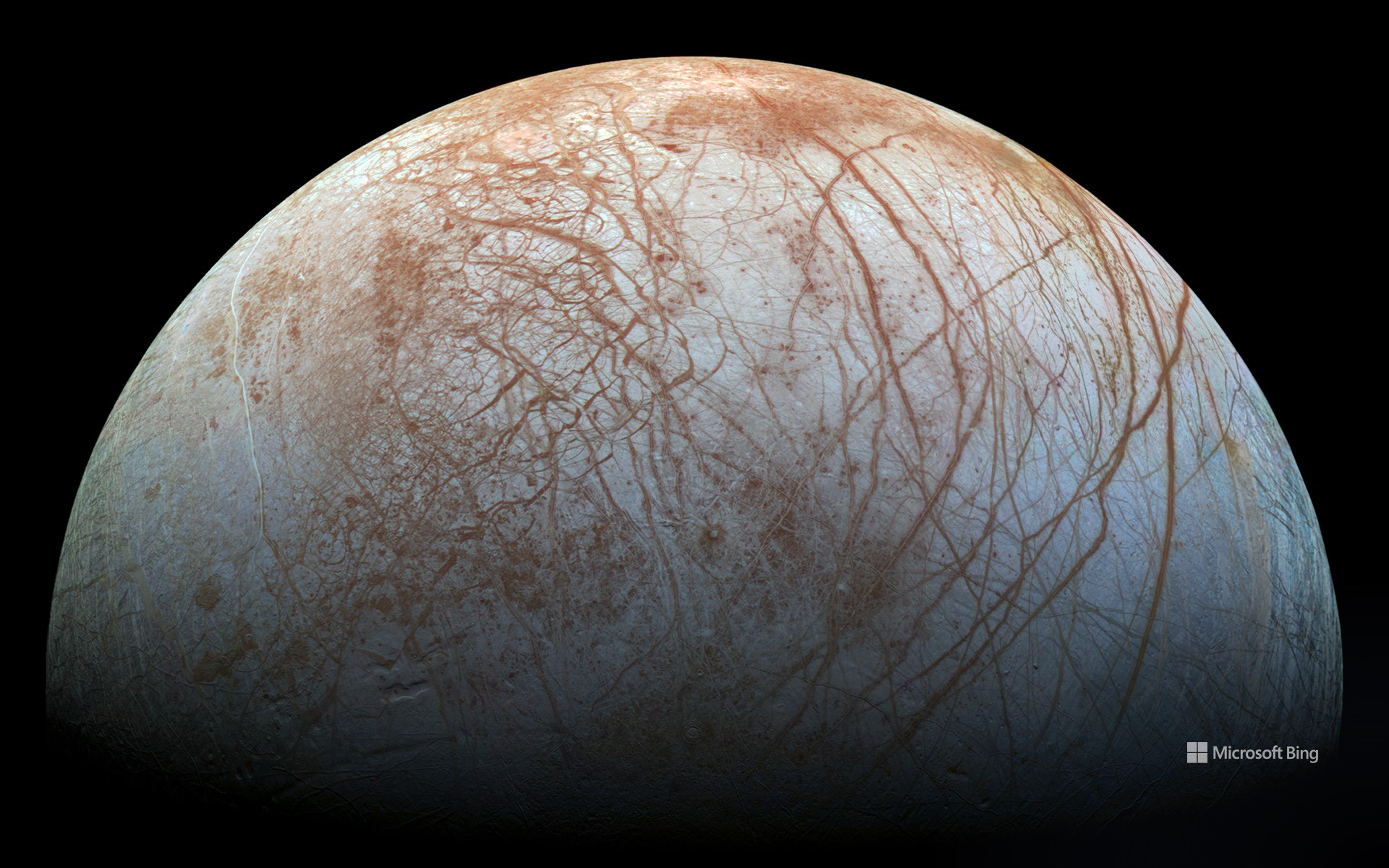
木星的冰卫星木卫二 Jupiter's icy moon Europa (© NASA/JPL-Caltech/SETI Institute)
一轮蓝月亮 A blue moon
世界空间周开幕
今天,我们要去探索宇宙。世界空间周的设立,是为了庆祝空间科学技术为改善人类生活水平所作出的贡献。除了帮助我们了解我们所生活的宇宙,太空探索在帮助科学家开发新药物、创造新能源、改进农业技术方面也发挥了重要作用。今年的世界空间周的主题是空间与气候变化,为了庆祝空间技术在了解和监测地球气候变化方面发挥的重要作用,将有83个国家会举办相关的庆祝活动。
太空探索还带来了太阳系的神奇照片,今天的这张就是其中之一。木卫二是木星已知的95颗卫星之一。它的表面主要由冻结的水构成,这些水破裂后又重新冻结,形成了我们在其表面看到的图案。事实上,虽然木卫二的大小只有地球的四分之一,但它的含水量可能是地球海洋的两倍。世界空间周是花点时间欣赏太阳系内外奇观的最佳时机!
World Space Week begins
Today, we're blasting off to explore the cosmos. World Space Week celebrates the science and technology that go into exploring our universe, and how it benefits us back on Earth. Space exploration has helped scientists develop new medicines, create new power sources, and even improve farming techniques. This year's theme is Space and Climate Change; events will be held in 83 countries to champion the role of space technology in understanding and monitoring Earth's climate.
Space exploration has also led to amazing photographs of our solar system, like the one featured here today. Europa is one of Jupiter's 95 known moons. Its surface is mainly made up of frozen water, which has broken up and refrozen, creating the patterns seen on its surface. Although Europa is just a quarter of the size of Earth, it may contain twice the amount of water. Space Week is the perfect time to take a moment to appreciate the wonders of our solar system, and beyond!
从国际空间站拍摄的巴哈马群岛 The Bahamas photographed from the International Space Station (© NASA)
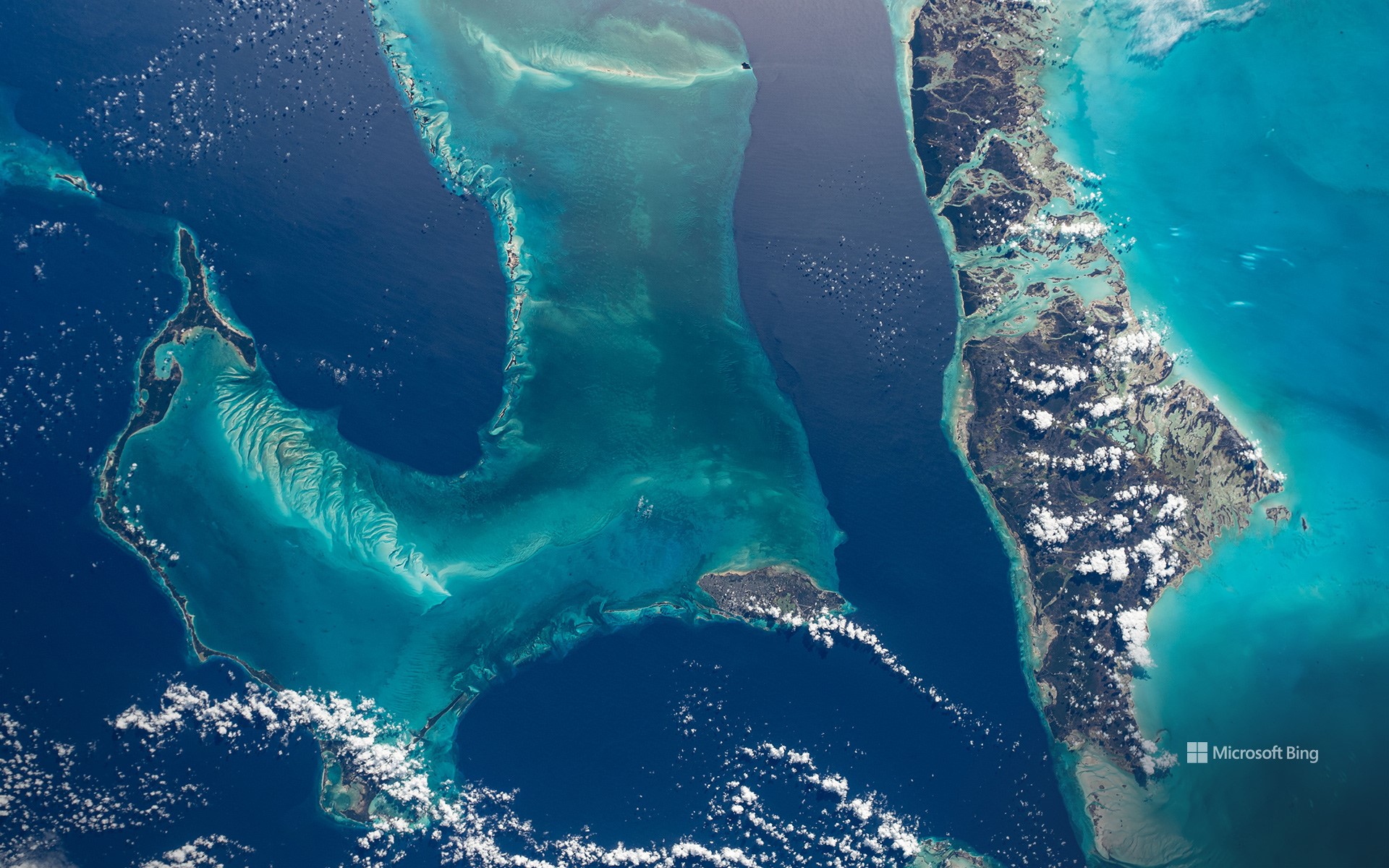
从国际空间站拍摄的巴哈马群岛 The Bahamas photographed from the International Space Station (© NASA)
潜入碧海 A dive into the blue
巴哈马
绿松石水域、充满活力的珊瑚礁、户外用餐和海盗故事——欢迎来到巴哈马!这个西印度群岛群岛在大西洋上有3000多个珊瑚礁、岛屿和小岛,是世界第三大堡礁——安德罗斯堡礁的所在地。对于被大自然吸引的冒险灵魂来说,长岛663英尺深的海洋天坑Dean's Blue Hole提供了一次激动人心的体验。从海港岛宁静的粉红色沙滩到首都拿骚熙熙攘攘的稻草市场和著名的酒窖,巴哈马不仅仅是一个目的地,它是一个迷人的故事。
The Bahamas
Turquoise waters, vibrant coral reefs, alfresco dining, and tales of pirates—welcome to the Bahamas! With over 3,000 cays, islands, and islets in the Atlantic Ocean, this West Indies archipelago is home to the world's third-largest barrier reef—the Andros Barrier Reef. For adventurous souls drawn to nature, Dean's Blue Hole, a 663-foot-deep marine sinkhole on Long Island, offers a thrilling experience. From the serene pink sand beaches of Harbour Island to the capital city Nassau's bustling Straw Market and famous wine cellars, the Bahamas is more than just a destination—it's a captivating tale waiting to unfold.
巴西亚马逊上空巨大的砧状云 Large anvil clouds above the Amazon in Brazil (© NASA)
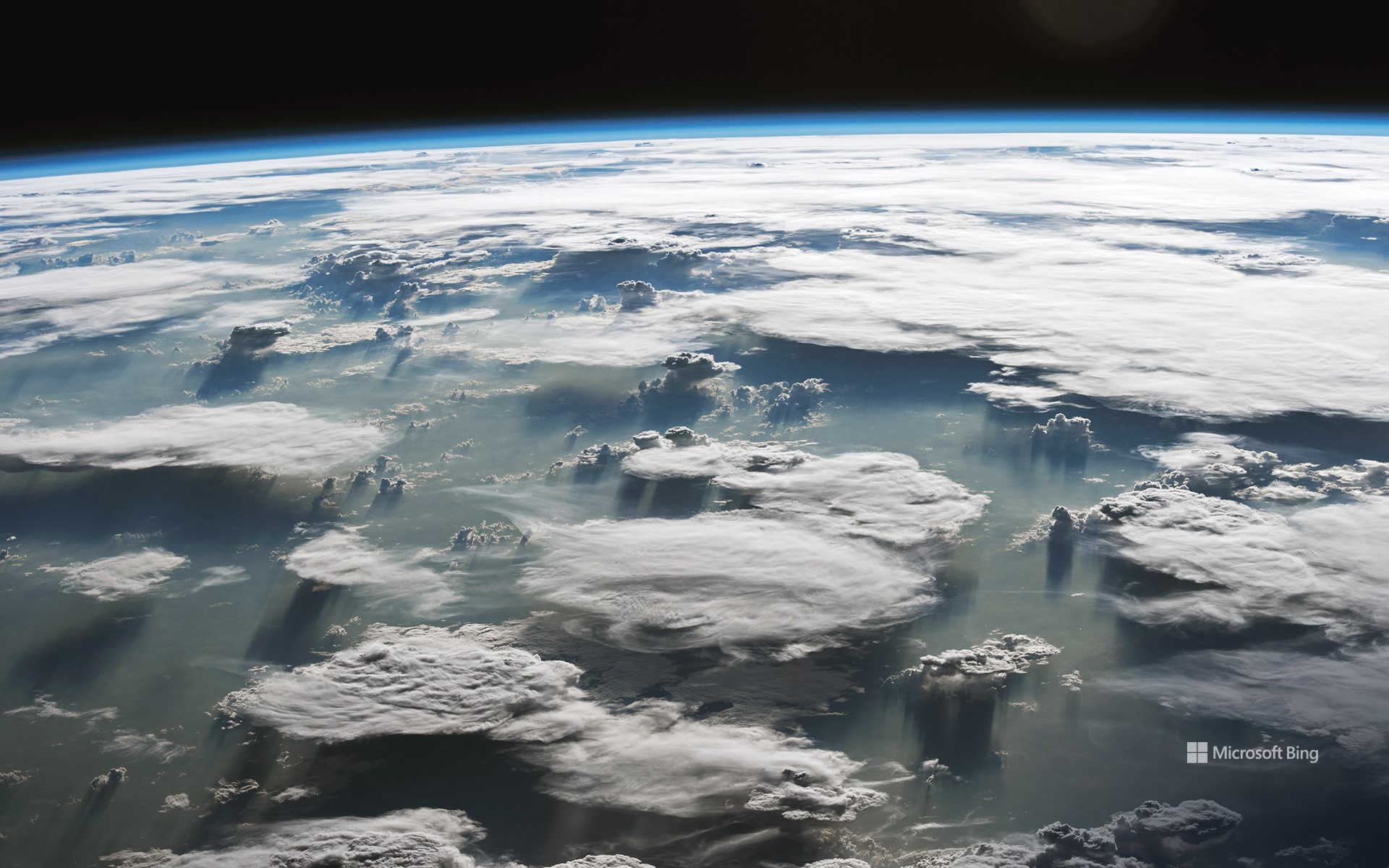
巴西亚马逊上空巨大的砧状云 Large anvil clouds above the Amazon in Brazil (© NASA)
造雾 Making a fog-cast
世界气象日
“当云层像岩石和高塔一样出现时,地球就会因频繁的阵雨而焕然一新”,这句古老的气象谚语对于雷暴云(又名积雨云或砧状云)来说有几分道理。而照片中展示的正是砧状云。今天,在世界气象日,我们向大气层的这个奇迹致敬。为了纪念世界气象组织于1950年3月23日成立,世界气象日的首次纪念活动于1961年的3月23日举行。但这一天不仅仅是对历史的致敬,还是为了呼吁人们认识到气象学在我们生活中的重要作用。天气预报可能并不总是可靠的,但由于卫星和超级计算机等技术的进步,天气预报已经取得了长足的进步。由于这些进步,全球天气模型可以提供长达16天的预报,龙卷风预警的平均提前时间从1974年的-15分钟缩短到今天的15分钟左右。让我们为气象学已取得的进展和将要取得的进步欢呼吧!
World Meteorological Day
'When clouds appear like rocks and towers, the Earth's refreshed with frequent showers.' There's a whisper of truth to this old proverb for the storm clouds, also known as cumulonimbus or anvil clouds, which are pictured here. Today, on World Meteorological Day, we honor the marvel that is our atmosphere. This observance, first held in 1961, commemorates the establishment of the World Meteorological Organization and recognizes the vital role meteorology plays in our lives. Weather forecasts may not always appear reliable, but thanks to advances in technology like satellites and supercomputers, they have come a long way. Global weather models provide forecasts for up to 16 days and, the average lead time for tornado warnings is now around 15 minutes. Cheers for the progress made and much more to come!
狼蛛星云中形成的年轻恒星,詹姆斯·韦布空间望远镜 Young stars forming in the Tarantula Nebula, James Webb Space Telescope (© NASA, ESA, CSA, STScI, Webb ERO Production Team)
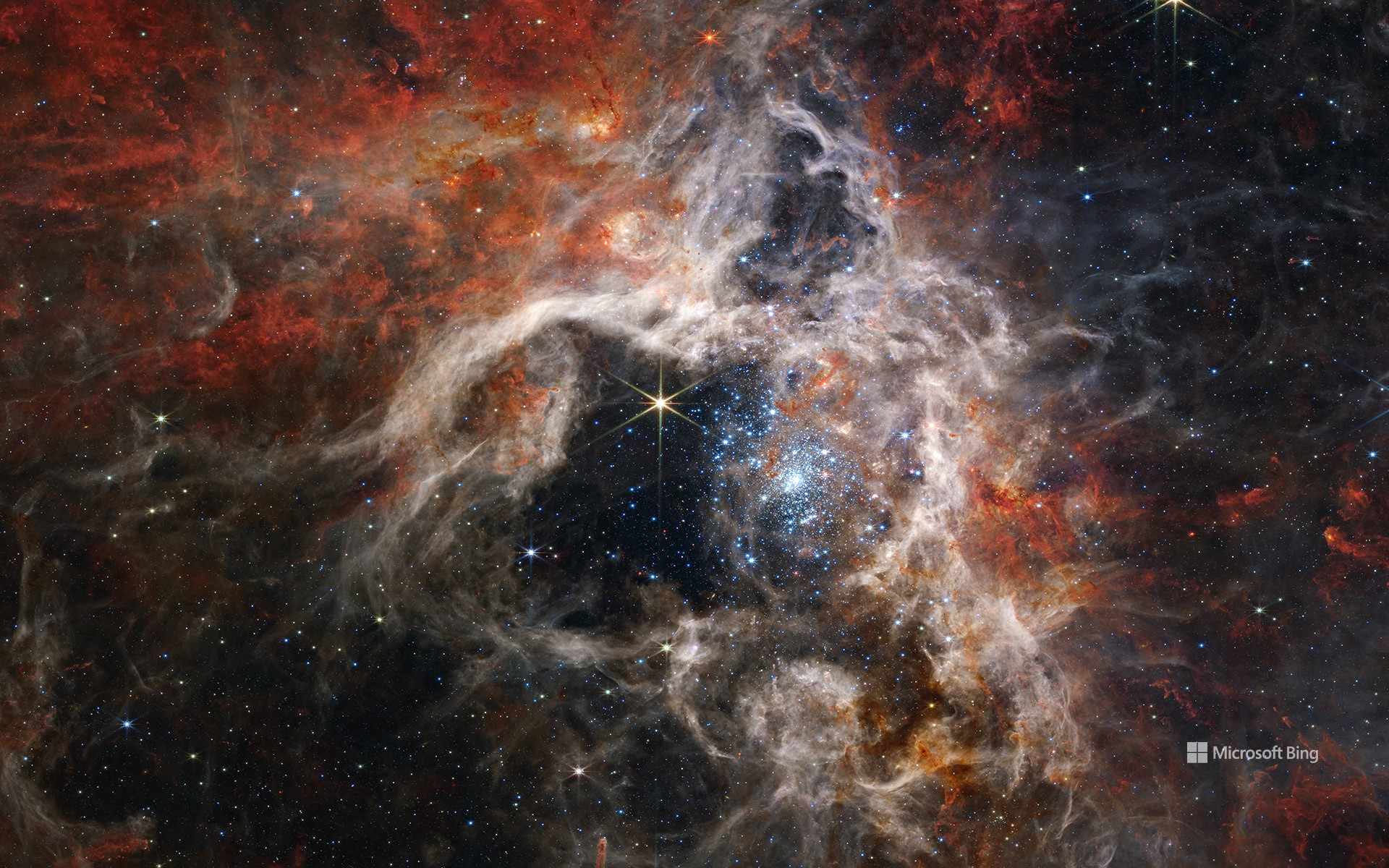
狼蛛星云中形成的年轻恒星,詹姆斯·韦布空间望远镜 Young stars forming in the Tarantula Nebula, James Webb Space Telescope (© NASA, ESA, CSA, STScI, Webb ERO Production Team)
狼蛛星云 A spider's Webb of stars
世界太空周
每年10月4日至10日是世界太空周,可以让全世界的人了解太空探索和太空技术带来的诸多好处,并庆祝人类在地外取得的成就。其中令人惊叹的宇宙奇观是狼蛛星云,由美国宇航局的詹姆斯·韦伯太空望远镜拍摄。狼蛛星云是本星系群中最明亮、最大的恒星形成区,本星系群也是银河系的所在地。该星云巨大的体积和动态能量为宇宙学家和天文学家提供了大量引人注目的素材。
World Space Week
It's World Space Week, an opportunity to celebrate humanity's extraterrestrial achievements, as well as the benefits that come from space exploration and technology. The star of our homepage is actually a star-forming region known as the Tarantula Nebula, found in the same group of galaxies as our Milky Way. This detailed image was captured by the powerful James Webb Space Telescope and shows thousands of never-before-seen stars, previously obscured by cosmic dust. The nebula's colossal size and dynamic energy offer plenty of compelling material for astronomers and stargazers of all stripes.
从美国宇航局猎户座飞船上看到的月球 The moon seen from the Orion spacecraft of NASA's Artemis mission (© NASA
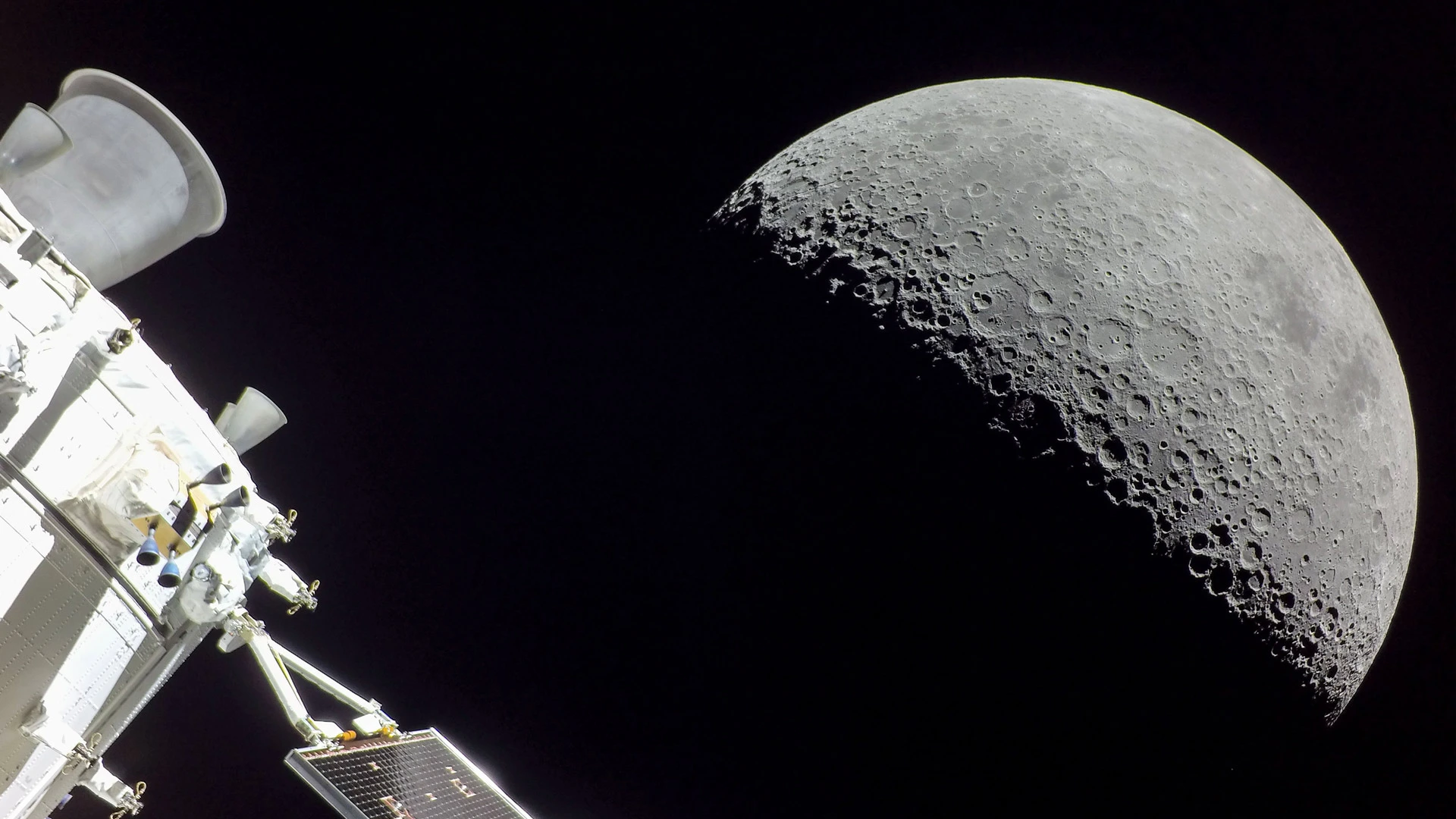
从美国宇航局猎户座飞船上看到的月球 The moon seen from the Orion spacecraft of NASA's Artemis mission (© NASA)
为我们的近邻月球而庆祝 Celebrating our looming lunar neighbor
国际月球日
为了纪念1969年7月20日人类首次成功登陆月球,7月20日被定为国际月球日。这个节日不仅让人们回顾我们过去在月球探索上取得的卓越成就,也让人们关注我们如今在月球探索方面的获得的进步。图片上的美国宇航局研制的猎户座飞船正是这种进步的一个实证。这座飞船是为深空探索而设计的,它在2022年执行了一次无人绕月飞行,将在2024年进行一次载人绕月飞行,并计划在2025年载宇航员重返月球。这个节日的意义还在于让大家意识到月球的重要性,并了解人类未来在太空探索和太空殖民方面的潜力。
International Moon Day
International Moon Day is celebrated on July 20, the day humans first set foot on the moon during the Apollo 11 mission in 1969. It recognizes our lunar achievements and highlights scientific and technological advancements, like NASA's Orion spacecraft, seen here. Designed for deep space exploration, Orion completed a test flight to the moon without astronauts in 2022 and will carry out a crewed orbit in 2024. The plan is to return astronauts to the moon's surface in 2025. NASA hopes that these flights, along with events like International Moon Day, will encourage public engagement and education about the moon and its influence on Earth, as well as the potential for future space exploration and colonization.
从国际空间站拍摄的地球 Earth seen from the International Space Station (© Tim Peake/ESA/NASA via Getty Images)
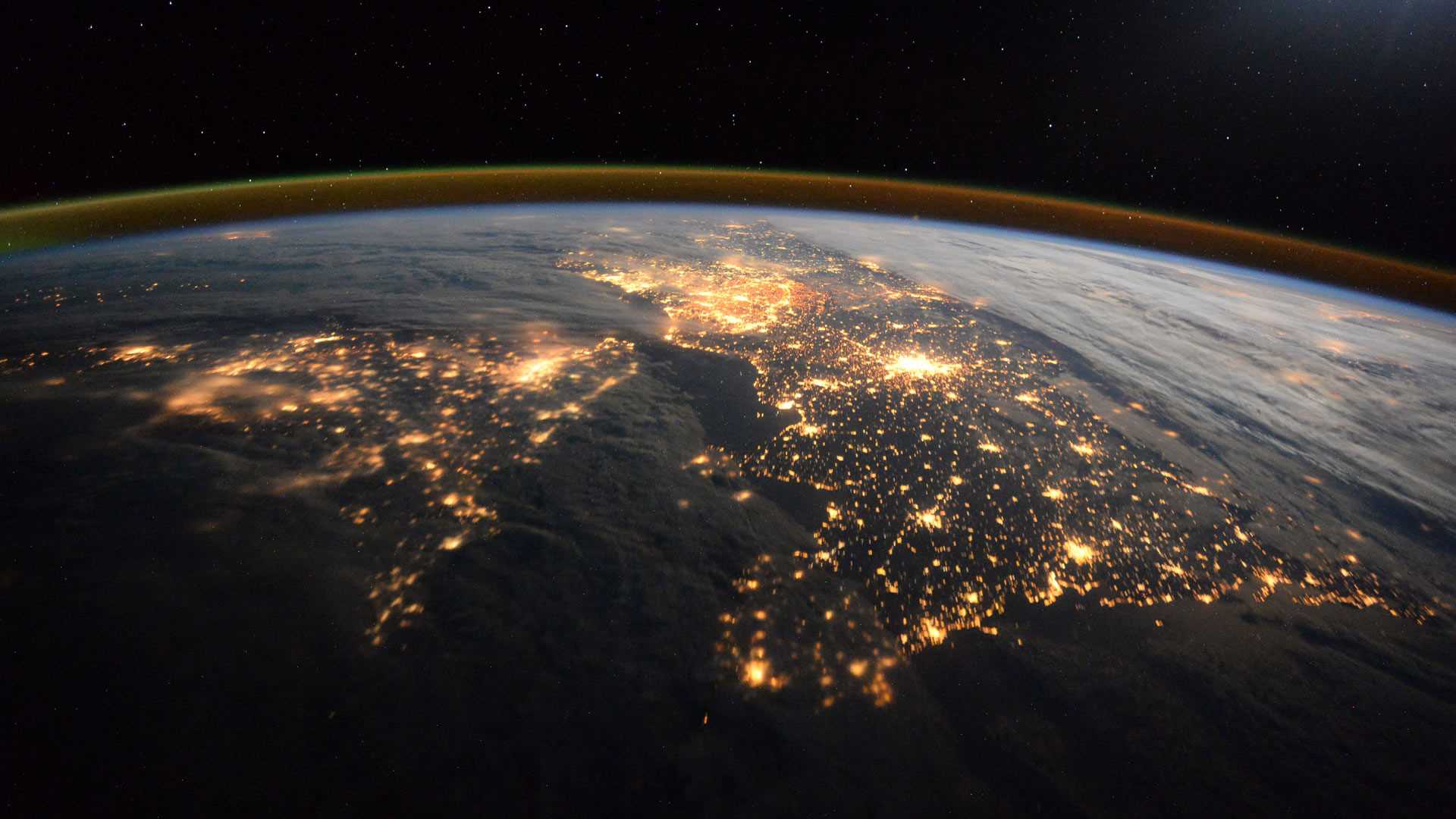
从国际空间站拍摄的地球 Earth seen from the International Space Station (© Tim Peake/ESA/NASA via Getty Images)
此景只应天上有 A view that's out of this world
尤里之夜
1961年4月12日,宇航员尤里·加加林成为人类历史上前往太空的第一人,举世震惊。他乘坐“东方太空3KA”号,在两小时之内完成了绕地球一周的飞行。此后不到一个月的时间,水星计划的宇航员艾伦·谢泼德成功飞往太空,成为第一个进入太空的美国人。今天这张照片向我们展示了从国际空间站拍摄的地球,从太空回望地球的风景,依然魅力十足,星光璀璨俨然一副艺术品。每年的4月12日,是纪念加加林的“尤里之夜”,也被称为“世界太空派对”,这一天是全球天文学爱好者的狂欢。
Earth seen from the International Space Station
On April 12, 1961, Russian cosmonaut Yuri Gagarin astounded the world by becoming the first person to travel to outer space. In less than two hours, Gagarin completed a full orbit of the Earth in the Vostok 3KA spacecraft. Less than a month later, Mercury astronaut Alan Shepard became the first American in space. The spectacle of looking back at Earth from space has not lost its charm, as you can see in today's picture taken from the International Space Station. Also known as the 'World Space Party,' Yuri's Night is a global celebration of astronomy and a reflection on how space exploration can unite people in a divided world.
甘博阿陨击坑,火星 Gamboa Crater, Mars (© NASA/JPL-Caltech/University of Arizona)
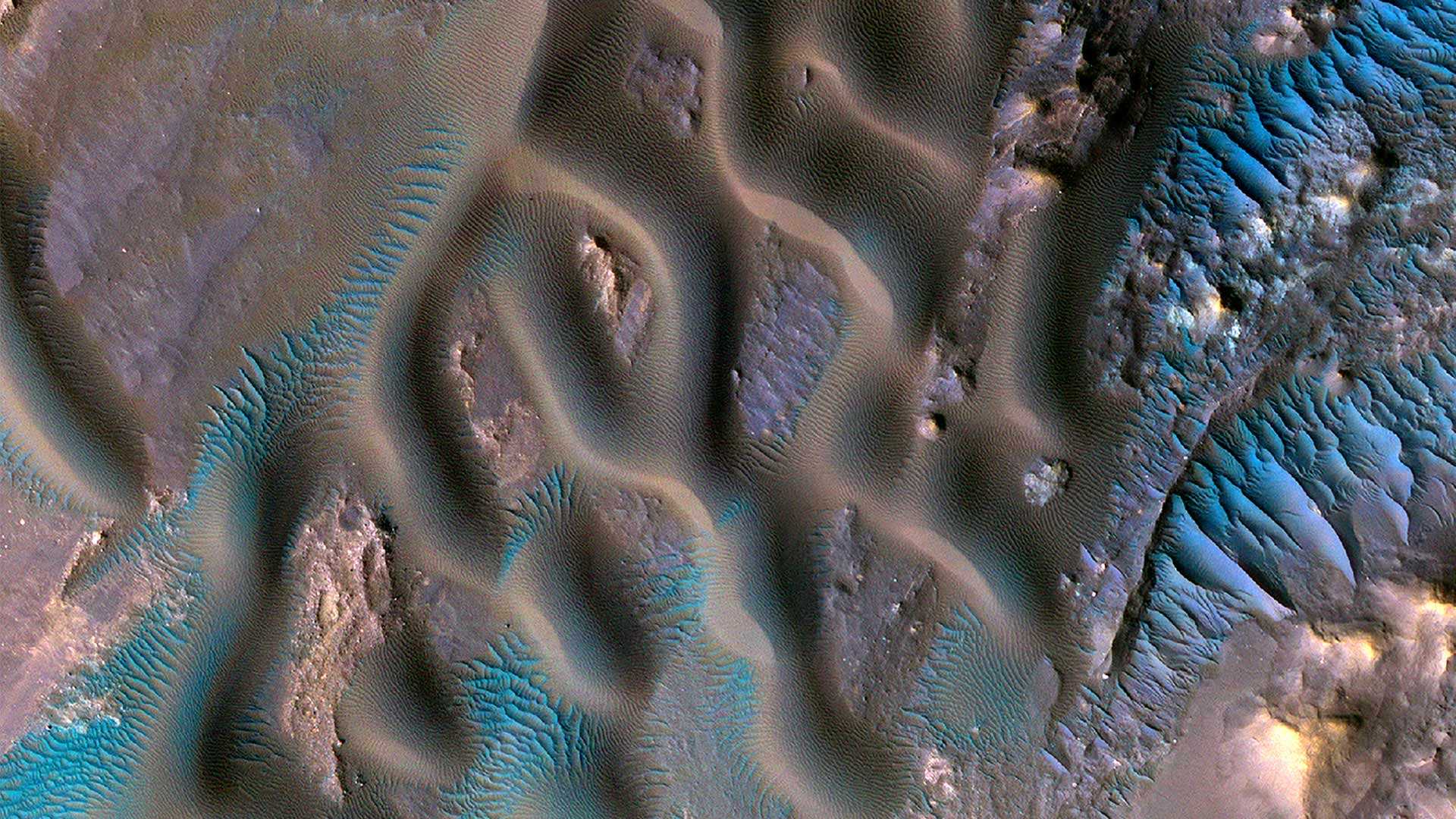
甘博阿陨击坑,火星 Gamboa Crater, Mars (© NASA/JPL-Caltech/University of Arizona)
此景只应天上有 Out of this world
甘博阿陨击坑,火星
在火星上生存相当艰难,天气极寒、干燥,而且条件恶劣。火星上的平均温度约为零下62摄氏度,两极的温度甚至可能低至零下152摄氏度。但这颗行星上有许多峡谷、死火山和冰盖,远观还是很美的。火星勘测轨道飞行器发回的大多数照片都显示火星是一颗红色星球,这是因为火星表面有大量红色的赤铁矿,所以呈现橘红色。
这张照片展示的是甘博阿陨击坑,但这并非甘博阿陨击坑的真实颜色。科学家们对这张照片进行了校色,视觉效果更直观,更便于科学分析。
Gamboa Crater, Mars
It would be pretty tough to live on Mars. It's cold, dry, and the conditions are harsh. The planet's average temperature is about –81 degrees Fahrenheit, but it can get as low as –243 at the poles. But with many canyons, extinct volcanoes, and ice caps, it's beautiful to look at from afar. Most photos of the Red Planet highlight its rusty color, caused by high levels of iron oxide.
This photo shows us Mars' Gamboa Crater, but not with accurate colors. Scientists have recolored the wavelengths that our eyes can't see on their own. These added details let us see the effects of wind inside the crater, providing a perfect example of the spectacularly complex features of this planet.
从国际空间站看到的巴哈马周围的蓝绿色水域 Blue-green waters around the Bahamas as seen from the International Space Station (© NASA)
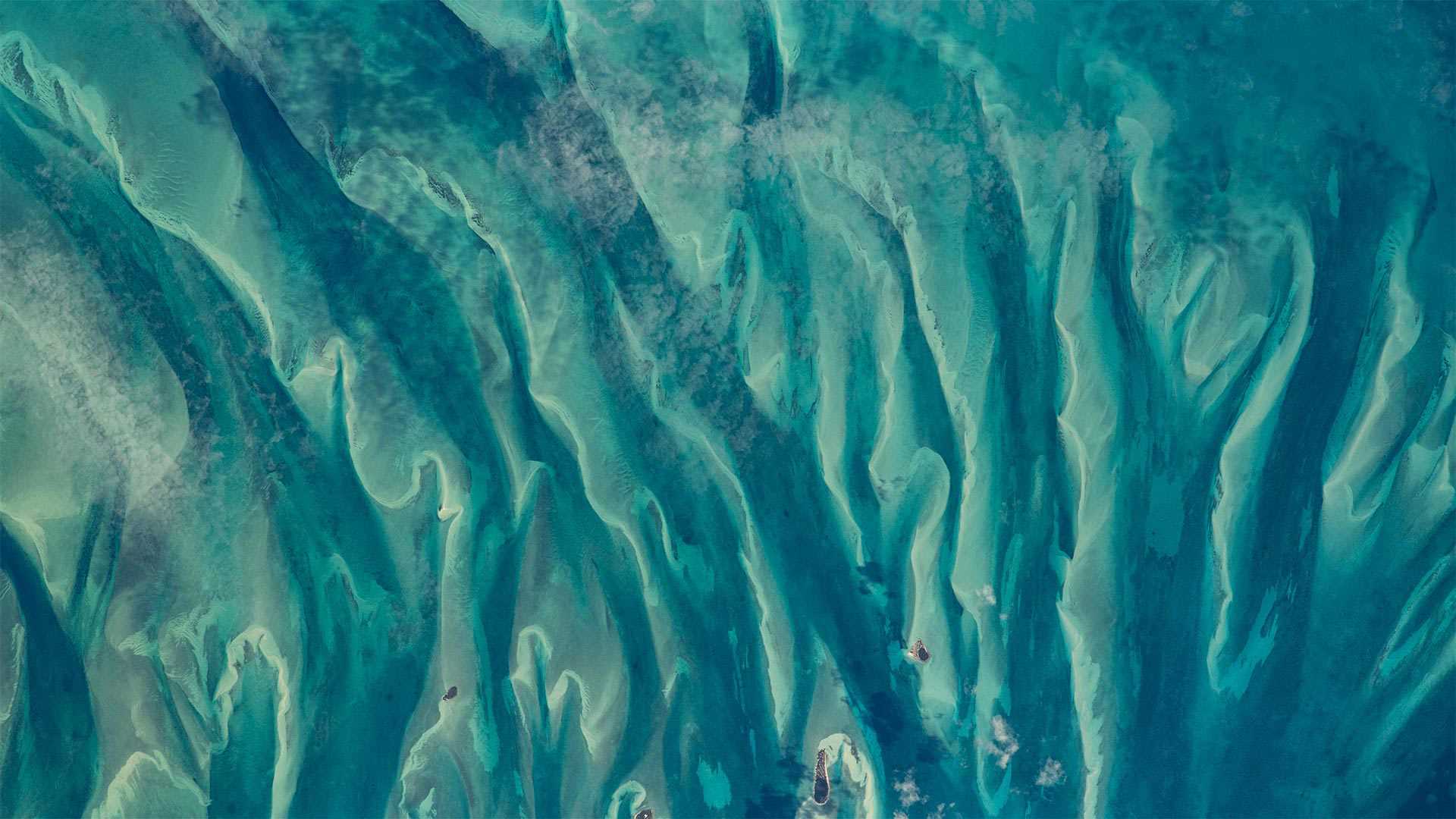
从国际空间站看到的巴哈马周围的蓝绿色水域 Blue-green waters around the Bahamas as seen from the International Space Station (© NASA)
像极了艺术画作的真实照片 When life imitates art
从国际空间站看到的巴哈马
对于国际空间站上的宇航员来说,巴哈马群岛是一个很容易拍照的地方。当从国际空间站地球上方的有利位置观看时,水面下的巨大山丘形成了引人注目的图像。这些海底山丘在这张海洋图像中呈现深蓝色,表明其深度可达13000英尺。
The Bahamas as seen from the ISS
The islands of the Bahamas are an easy photo op for astronauts aboard the International Space Station. The massive hills under the water's surface make for striking images when seen from the ISS's vantage point high above Earth. These undersea hills, which appear dark blue in this ocean image, indicate depths that can reach 13,000 feet.
从国际空间站看到的地球 Earth as seen from the International Space Station (© JSC/NASA)
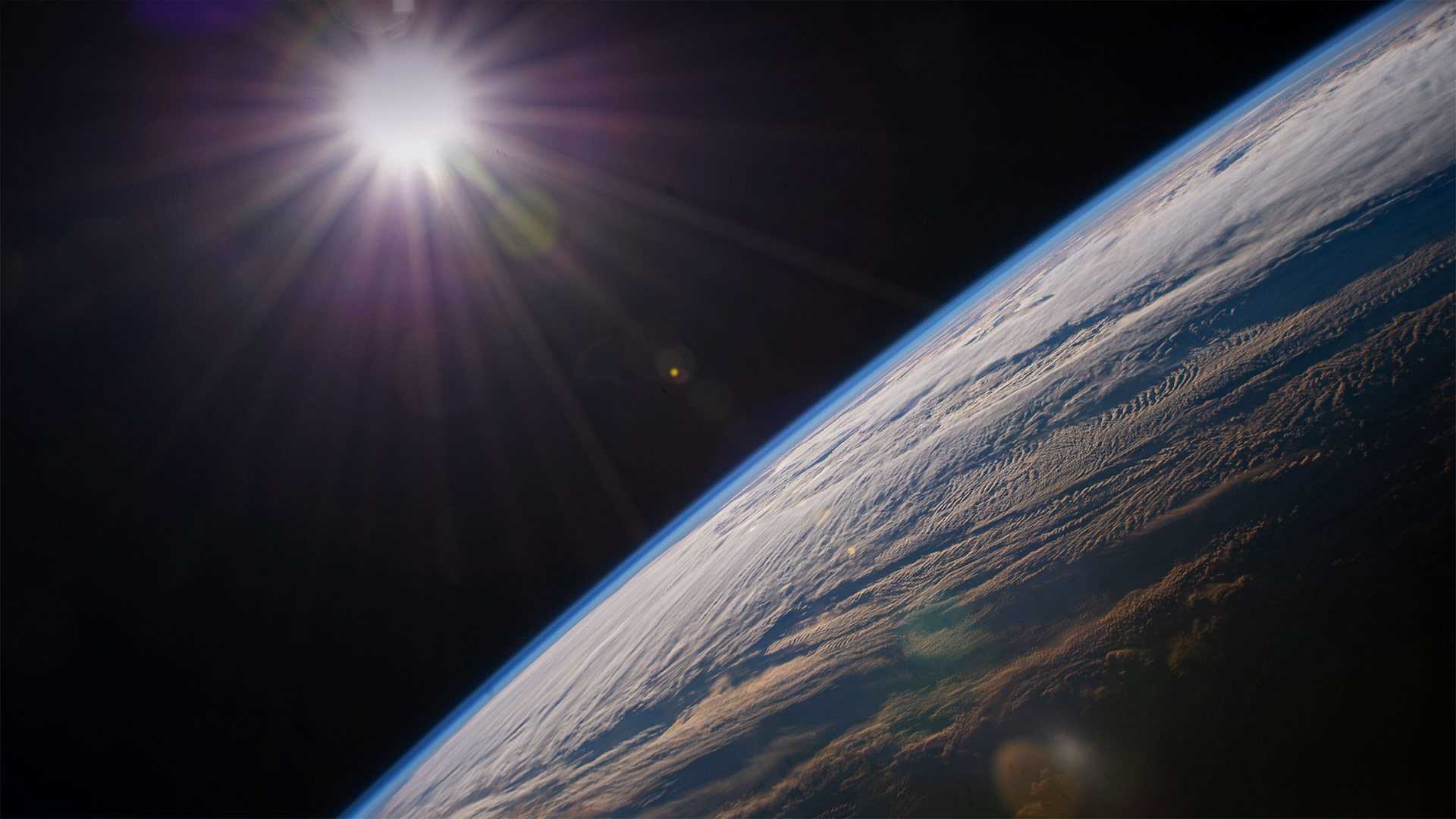
从国际空间站看到的地球 Earth as seen from the International Space Station (© JSC/NASA)
如此接近,却又如此遥远
地球的近日点 / 从国际空间站看地球
今天是地球的近日点,由于地球绕太阳公转的轨道是椭圆形的,所以冬至后两周,地球距离太阳最近。你可能有疑问:地球离太阳最近的时候,为什么我们没觉得更热?其实,这是因为近日点的时候地球所接受到的太阳辐射只比平时强了大约7%,这种微小的差异对地球天气的影响并不大。
Earth as seen from the International Space Station
We've reached perihelion! Two weeks after winter solstice the Earth's orbit is closer to the sun than at any other time of year—a result of the Earth's elliptical orbit. You may think, 'If we're so close to the sun, why can't I feel the heat?' Well, that's because we're only receiving about 7% more solar energy than normal, which doesn't really have much impact on the weather.